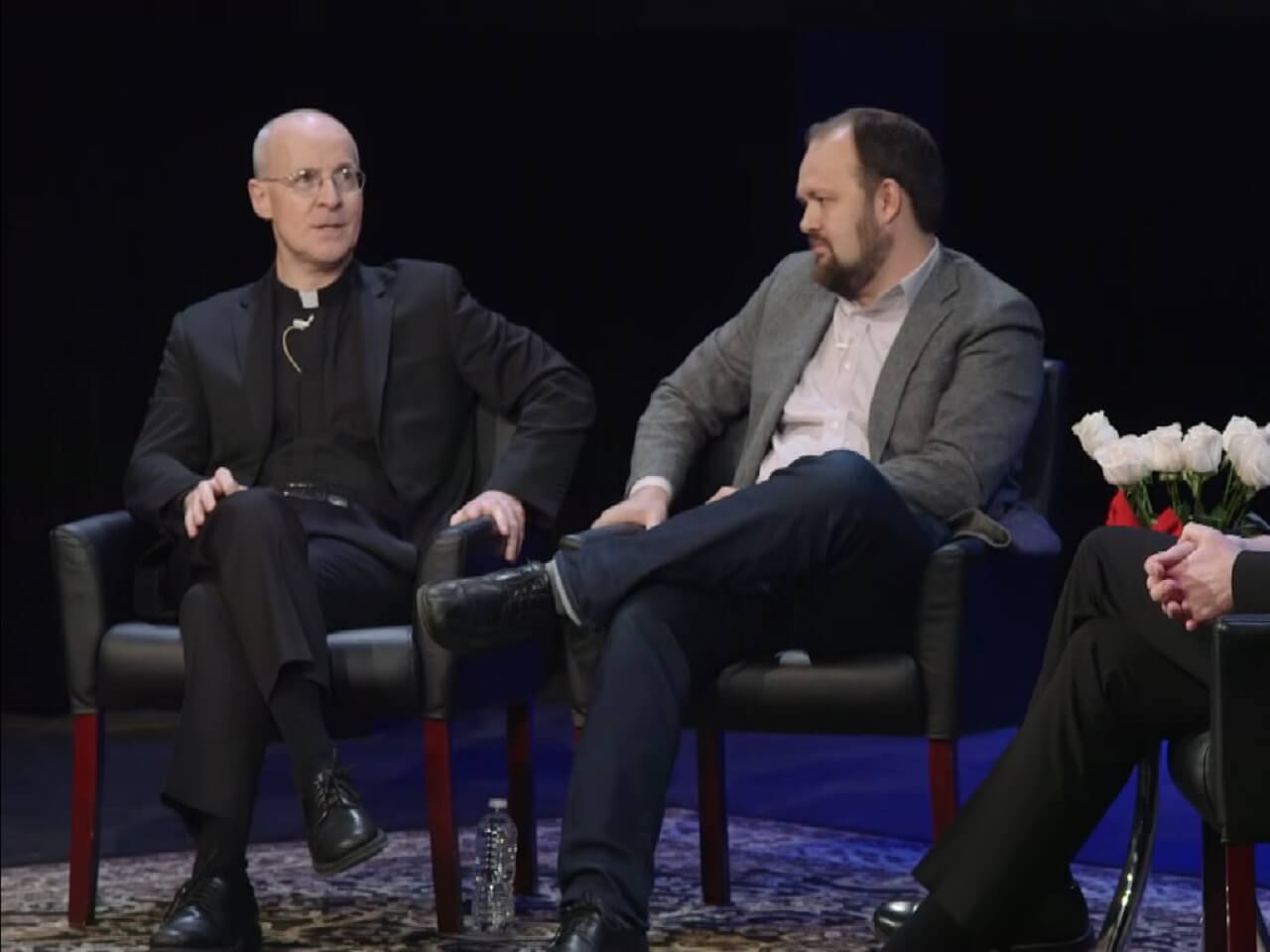We heard recently from two disparate Catholic authors who surprisingly agree about the current condition of the Catholic Church.
One of the authors is Ross Douthat, self-described conservative Catholic and author of To Change the Church (subtitled “Pope Francis and the Future of Catholicism”), a recent book that explores “what exactly constitutes the Catholic core.”
The other author is James Martin, S.J., author of Building a Bridge (subtitled “How the Catholic Church and the LGBT Community Can Enter into a Relationship of Respect, Compassion and Sensitivity”), a recent book that questions a core Catholic teaching.
Mr. Douthat was writing from his regular perch on the op-ed page of the New York Times. His column, dated April 15, 2019, was headed “From the Ashes of Notre Dame” and sub-headed “How a burning cathedral rebukes a divided Catholic Church.” He confesses that the column was originally going to be about the recent reflections of Pope Emeritus Benedict XVI on the causes of the sex abuse crisis, which were met with “fierce criticism from Francis partisans.”
Then the burning of the Notre Dame Cathedral happened. Not one to pass up a good metaphor, Mr. Douthat describes the two camps as “competing factions convinced that they are the firefighters inside Notre-Dame, and their rivals are the fire.”
The point of Mr. Douthat’s column is that the Catholic Church today is “a church in pieces,” a Church that “mirrors the polarization of Western culture, rather than offering an integrated alternative.” He says the Church of today is “torn between competing visions of how to be Catholic.” He likens the Church to “a museum whose docents all seem to hate one another.”
Father Martin was writing from his pulpit on Twitter on April 24, 2019. (I do not follow Father Martin, but someone I do follow retweeted him.) The tweet said, “One Catholic’s experience with a traditionalist group in a local parish: ‘Worse, as this shadow church grows, the unity implied in the very word ‘Catholic’ is jeopardized.’”
This tweet about “one Catholic’s experience” in that Catholic’s parish seemingly had nothing to do with Pope Emeritus Benedict’s reflections on the root causes of clerical sex abuse, which Benedict placed, at least in part, on “homosexual cliques” in seminaries, which “significantly changed the climate in the seminaries.”
Nor did this tweet have anything to do with the Notre Dame fire. (In fact, it appears that the parishioner’s unpleasant experience with a traditionalist group in his parish happened in 2017.) Nonetheless, Father Martin saw some use in bringing it up at this time. Perhaps it is just the “hit dog will holler” proverb in action. Or perhaps it was a dog whistle to summon the pack.
In any case, both authors see the church as divided into two camps: between Francis partisans and Benedict partisans; between progressives and traditionalists; between the universal Church and the “shadow church.” Please, let us not debate where the dividing line really falls and which popes stand where. The point is that there is a line — somewhere — and people know in which camp they reside.
Mr. Douthat and Fr. Martin both make the same point. As Mr. Douthat put it, the docents in the museum all seem to hate one another. Why should that be the case? Are we all not Catholics and members of the church that He founded? No one wants to say it, because doing so inevitably leads to the S-word, but it now seems inescapable that the answer is “no.”
The “competing visions of how to be Catholic” are now so different, so opposed, that they cannot be said to be complementary visions of the same faith. If one is right, the other cannot also be right. If the faithful in one camp are sure that theirs is the path to Heaven, those in the other camp assuredly must be on the path to…someplace else, if it exists. The most bitter disputes arise when both sides of an argument are convinced they are right.
Ironically, there is one point of agreement between the two factions — namely, that there are two factions, only one of which can be right. Recall that Der Spiegel, in 2016, reported that Pope Francis told some friends, “It is not to be excluded that I will enter history as the one who split the Catholic Church.” It has come to pass, whether or not anyone will say it.
Which faction will win out? Father Martin thinks his faction has already won, but he is clearly worried about the growing “shadow church,” the members of which Father Martin’s friends find so annoying.
Mr. Douthat, on the other hand, thinks it will take a thousand years for the answer. As he puts it:
What lies beyond the stalemates and scandal and anger of our strange two-pope era?
Go ask the Catholics of 3019 A.D. It’s for them to know, and us, if God wills it, to find out.
Having “two popes” is proving to be much like having no pope. “In those days there was no king in Israel: but every one did that which seemed right to himself” (Judges 21:24).
Image: America Magazine via YouTube.


